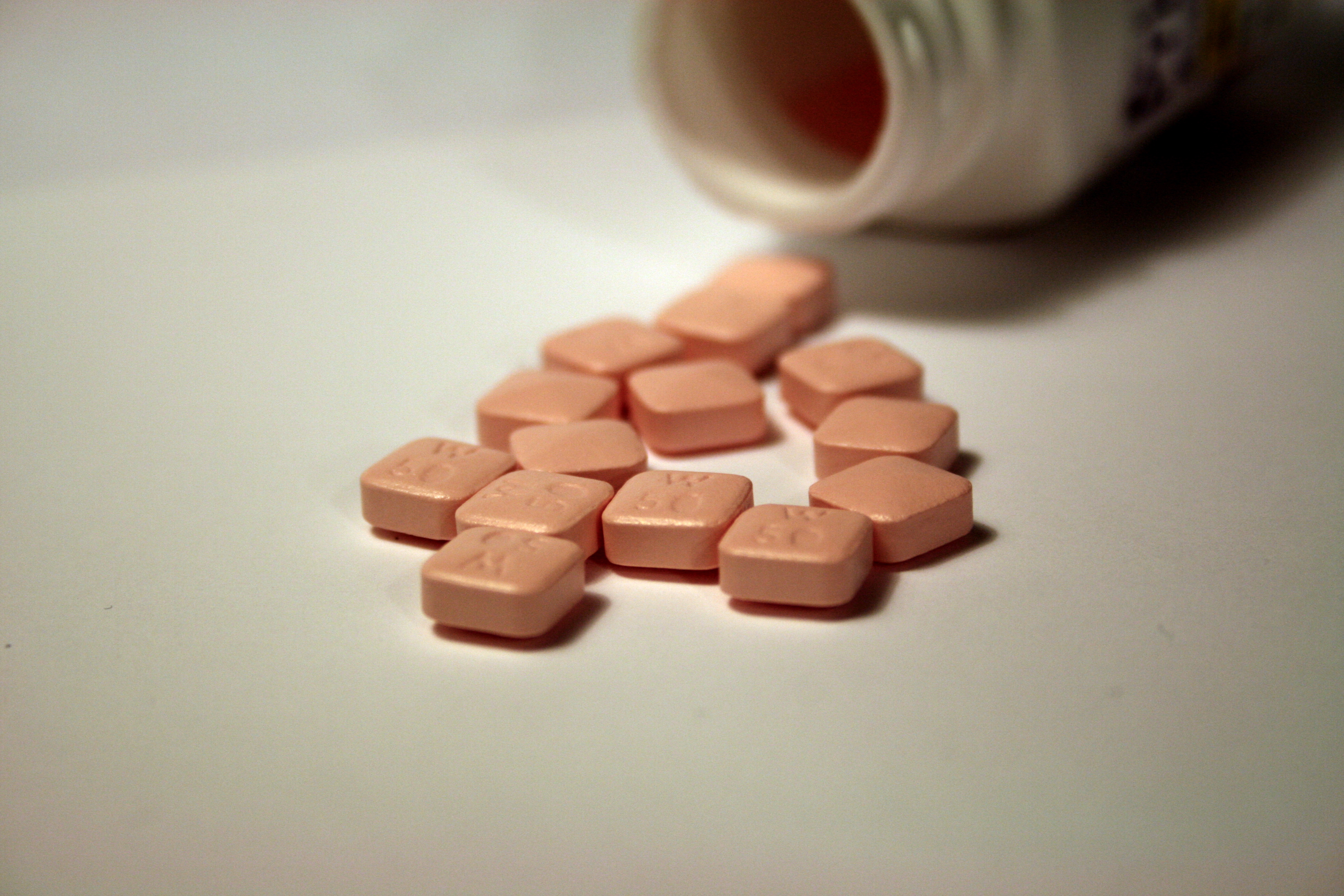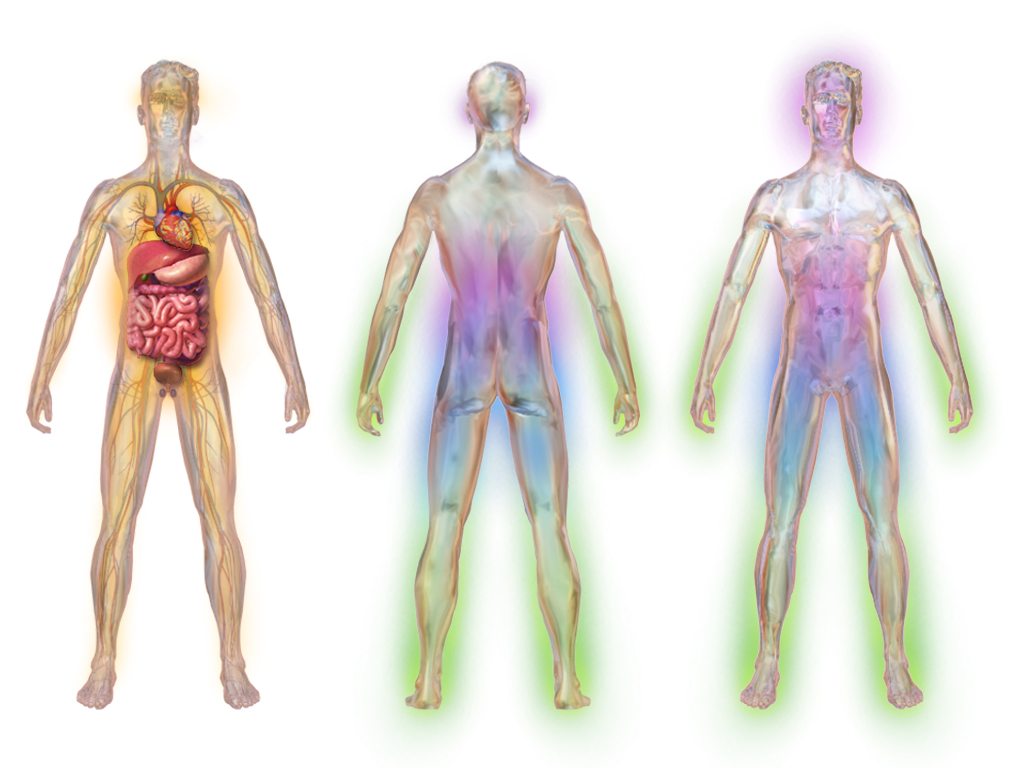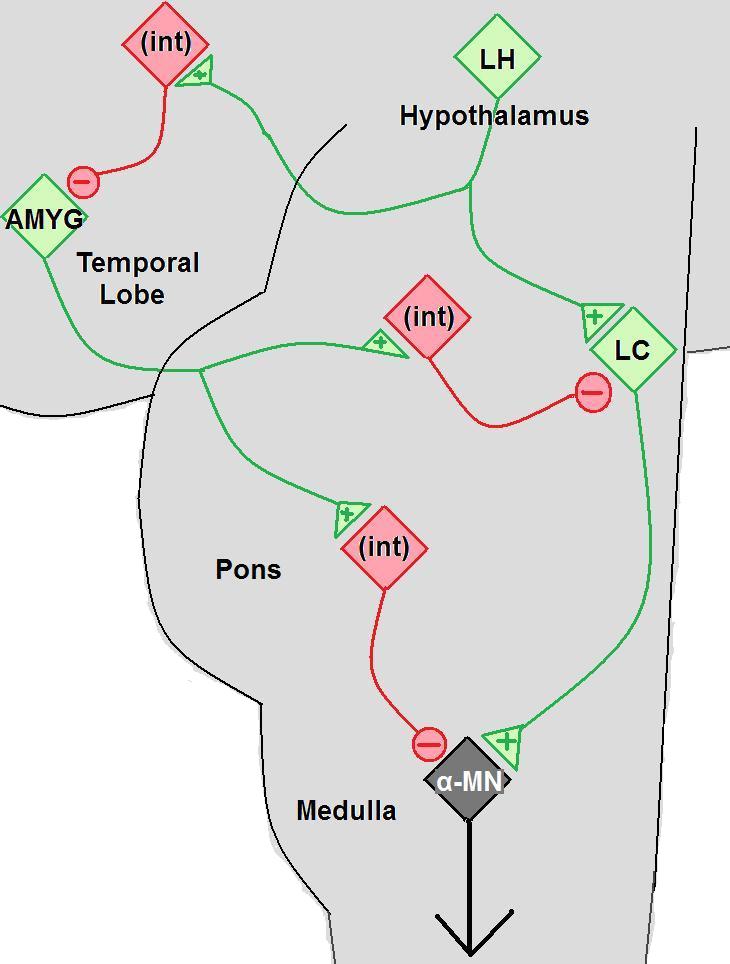|
Venlafaxine
Venlafaxine, sold under the brand name Effexor among others, is an antidepressant medication of the serotonin-norepinephrine reuptake inhibitor (SNRI) class. It is used to treat major depressive disorder, generalized anxiety disorder, panic disorder, and social anxiety disorder. It may also be used for chronic pain. It is taken by mouth. It is also available as the salt venlafaxine besylate in an extended-release formulation (Venbysi XR). Common side effects include loss of appetite, constipation, dry mouth, dizziness, sweating, insomnia, drowsiness and sexual problems. Severe side effects include an increased risk of suicide, mania, and serotonin syndrome. Antidepressant withdrawal syndrome may occur if stopped. There are concerns that use during the later part of pregnancy can harm the baby. How it works is not entirely clear, but it seems to be related to the potentiation of the activity of some neurotransmitters in the brain. Venlafaxine was approved for medical use in ... [...More Info...] [...Related Items...] OR: [Wikipedia] [Google] [Baidu] |
|
 |
Desvenlafaxine
Desvenlafaxine, sold under the brand name Pristiq among others, is a medication used to treat depression. It is an antidepressant of the serotonin-norepinephrine reuptake inhibitor (SNRI) class and is taken by mouth. It is recommended that the need for further treatment be occasionally reassessed. It may be less effective than its parent compound venlafaxine, although some studies have found comparable efficacy. Common side effects include dizziness, trouble sleeping, increased sweating, constipation, sleepiness, anxiety, and sexual problems. Serious side effects may include suicide in those under the age of 25, serotonin syndrome, bleeding, mania, and high blood pressure. A withdrawal syndrome may occur if the dose is decreased or the medication completely stopped. It is unclear if use during pregnancy or breastfeeding is safe. Desvenlafaxine was approved for medical use in the United States in 2008. In Europe its application for use was denied in 2009. But it is available i ... [...More Info...] [...Related Items...] OR: [Wikipedia] [Google] [Baidu] |
 |
Serotonin–norepinephrine Reuptake Inhibitor
Serotonin–norepinephrine reuptake inhibitors (SNRIs) are a class of antidepressant drugs used to treat major depressive disorder (MDD), anxiety disorders, obsessive–compulsive disorder (OCD), social phobia, attention-deficit hyperactivity disorder (ADHD), chronic neuropathic pain, fibromyalgia syndrome (FMS), and menopausal symptoms. SNRIs are monoamine reuptake inhibitors; specifically, they inhibit the reuptake of serotonin and norepinephrine. These neurotransmitters are thought to play an important role in mood regulation. SNRIs can be contrasted with the more widely used selective serotonin reuptake inhibitors (SSRIs), which act upon serotonin only. The human serotonin transporter (SERT) and noradrenaline transporter (NAT) are membrane transport proteins that are responsible for the reuptake of serotonin and noradrenaline from the synaptic cleft back into the presynaptic nerve terminal. Dual inhibition of serotonin and noradrenaline reuptake can offer advantages over ... [...More Info...] [...Related Items...] OR: [Wikipedia] [Google] [Baidu] |
 |
Antidepressant
Antidepressants are a class of medication used to treat major depressive disorder, anxiety disorders, chronic pain conditions, and to help manage addictions. Common side-effects of antidepressants include dry mouth, weight gain, dizziness, headaches, sexual dysfunction, and emotional blunting. There is a slight increased risk of suicidal thinking and behavior when taken by children, adolescents, and young adults. Discontinuation syndrome may occur after stopping any antidepressant which resembles recurrent depression. Some research regarding the effectiveness of antidepressants for depression in adults has found benefits, whilst other research has not. Evidence of benefit in children and adolescents is unclear. The twenty-one most commonly prescribed antidepressant medications are more effective than placebo for the short-term (acute) treatments of adults with major depressive disorder. There is debate in the medical community about how much of the observed effects of ... [...More Info...] [...Related Items...] OR: [Wikipedia] [Google] [Baidu] |
 |
Generalized Anxiety Disorder
Generalized anxiety disorder (GAD) is a mental and behavioral disorder, specifically an anxiety disorder characterized by excessive, uncontrollable and often irrational worry about events or activities. Worry often interferes with daily functioning, and individuals with GAD are often overly concerned about everyday matters such as health, finances, death, family, relationship concerns, or work difficulties."What Is Generalized Anxiety Disorder?" National Institute of Mental Health. Accessed 28 May 2008. Symptoms may include excessive worry, restlessness, , exhaustion, irritability, sweating, and [...More Info...] [...Related Items...] OR: [Wikipedia] [Google] [Baidu] |
|
General Anxiety Disorder
Generalized anxiety disorder (GAD) is a mental and behavioral disorder, specifically an anxiety disorder characterized by excessive, uncontrollable and often irrational worry about events or activities. Worry often interferes with daily functioning, and individuals with GAD are often overly concerned about everyday matters such as health, finances, death, family, relationship concerns, or work difficulties."What Is Generalized Anxiety Disorder?" National Institute of Mental Health. Accessed 28 May 2008. Symptoms may include excessive worry, restlessness, , exhaustion, irritability, sweating, and |
|
 |
Diabetic Neuropathy
Diabetic neuropathy is various types of nerve damage associated with diabetes mellitus. Symptoms depend on the site of nerve damage and can include motor changes such as weakness; sensory symptoms such as numbness, tingling, or pain; or autonomic changes such as urinary symptoms. These changes are thought to result from microvascular injury involving small blood vessels that supply nerves ( vasa nervorum). Relatively common conditions which may be associated with diabetic neuropathy include distal symmetric polyneuropathy; third, fourth, or sixth cranial nerve palsy; mononeuropathy; mononeuropathy multiplex; diabetic amyotrophy; and autonomic neuropathy. Signs and symptoms Diabetic neuropathy can affect any peripheral nerves including sensory neurons, motor neurons, and the autonomic nervous system. Therefore, diabetic neuropathy has the potential to affect essentially any organ system and can cause a range of symptoms. There are several distinct syndromes based on the orga ... [...More Info...] [...Related Items...] OR: [Wikipedia] [Google] [Baidu] |
|
Social Anxiety Disorder
Social anxiety disorder (SAD), also known as social phobia, is an anxiety disorder characterized by sentiments of fear and anxiety in social situations, causing considerable distress and impaired ability to function in at least some aspects of daily life.National Institute for Health and Clinical Excellence: GuidanceSocial Anxiety Disorder: Recognition, Assessment, and Treatment Leicester (UK): British Psychological Society; 2013. These fears can be triggered by perceived or actual scrutiny from others. Individuals with social anxiety disorder fear negative evaluations from other people. Physical symptoms often include excessive blushing, excess sweating, trembling, palpitations, and nausea. Stammering may be present, along with rapid speech. Panic attacks can also occur under intense fear and discomfort. Some affected individuals may use alcohol or other drugs to reduce fears and inhibitions at social events. It is common for those with social phobia to self-medicate i ... [...More Info...] [...Related Items...] OR: [Wikipedia] [Google] [Baidu] |
|
|
Social Phobia
Social anxiety disorder (SAD), also known as social phobia, is an anxiety disorder characterized by sentiments of fear and anxiety in social situations, causing considerable distress and impaired ability to function in at least some aspects of daily life.National Institute for Health and Clinical Excellence: GuidanceSocial Anxiety Disorder: Recognition, Assessment, and Treatment Leicester (UK): British Psychological Society; 2013. These fears can be triggered by perceived or actual scrutiny from others. Individuals with social anxiety disorder fear negative evaluations from other people. Physical symptoms often include excessive blushing, excess sweating, trembling, palpitations, and nausea. Stammering may be present, along with rapid speech. Panic attacks can also occur under intense fear and discomfort. Some affected individuals may use alcohol or other drugs to reduce fears and inhibitions at social events. It is common for those with social phobia to self-medicate in t ... [...More Info...] [...Related Items...] OR: [Wikipedia] [Google] [Baidu] |
|
|
Antidepressant Withdrawal Syndrome
Antidepressant discontinuation syndrome, also called antidepressant withdrawal syndrome, is a condition that can occur following the interruption, reduction, or discontinuation of antidepressant medication following its continuous use of at least a month. The symptoms may include flu-like symptoms, trouble sleeping, nausea, poor balance, sensory changes, anxiety, and depression. The problem usually begins within three days and may last for several months or years. Rarely psychosis may occur. A discontinuation syndrome can occur after stopping any antidepressant including selective serotonin reuptake inhibitors (SSRIs), serotonin–norepinephrine reuptake inhibitors (SNRIs), monoamine oxidase inhibitors (MAOIs) and tricyclic antidepressants (TCAs). The risk is greater among those who have taken the medication for longer and when the medication in question has a short half-life. The underlying reason for its occurrence is unclear. The diagnosis is based on the symptoms. Method ... [...More Info...] [...Related Items...] OR: [Wikipedia] [Google] [Baidu] |
|
 |
Cataplexy
Cataplexy is a sudden and transient episode of muscle weakness accompanied by full conscious awareness, typically triggered by emotions such as laughing, crying, or terror. Cataplexy affects approximately 70% of people who have narcolepsy, and is caused by an autoimmune destruction of hypothalamic neurons that produce the neuropeptide hypocretin (also called orexin), which regulates arousal and has a role in stabilization of the transition between wake and sleep states. Cataplexy without narcolepsy is rare and the cause is unknown. The term cataplexy originates from the Greek κατά (''kata'', meaning "down"), and πλῆξις (''plēxis'', meaning "strike") and it was first used around 1880 in German physiology literature to describe the phenomenon of tonic immobility also known as " playing possum" (in reference to the opossum's behavior of feigning death when threatened). In the same year the French neuropsychiatrist Jean-Baptiste Gélineau coined the term 'narcolepsy' a ... [...More Info...] [...Related Items...] OR: [Wikipedia] [Google] [Baidu] |
|
CYP2D6
Cytochrome P450 2D6 (CYP2D6) is an enzyme that in humans is encoded by the ''CYP2D6'' gene. ''CYP2D6'' is primarily expressed in the liver. It is also highly expressed in areas of the central nervous system, including the substantia nigra. CYP2D6, a member of the cytochrome P450 mixed-function oxidase system, is one of the most important enzymes involved in the metabolism of xenobiotics in the body. In particular, CYP2D6 is responsible for the metabolism and elimination of approximately 25% of clinically used drugs, via the addition or removal of certain functional groups – specifically, hydroxylation, demethylation, and dealkylation. CYP2D6 also activates some prodrugs. This enzyme also metabolizes several endogenous substances, such as hydroxytryptamines, neurosteroids, and both ''m''-tyramine and ''p''-tyramine which CYP2D6 metabolizes into dopamine in the brain and liver. Considerable variation exists in the efficiency and amount of CYP2D6 enzyme produced be ... [...More Info...] [...Related Items...] OR: [Wikipedia] [Google] [Baidu] |
|
 |
Major Depressive Disorder
Major depressive disorder (MDD), also known as clinical depression, is a mental disorder characterized by at least two weeks of pervasive low mood, low self-esteem, and loss of interest or pleasure in normally enjoyable activities. Introduced by a group of US clinicians in the mid-1970s, the term was adopted by the American Psychiatric Association for this symptom cluster under mood disorders in the 1980 version of the '' Diagnostic and Statistical Manual of Mental Disorders'' (DSM-III), and has become widely used since. The diagnosis of major depressive disorder is based on the person's reported experiences, behavior reported by relatives or friends, and a mental status examination. There is no laboratory test for the disorder, but testing may be done to rule out physical conditions that can cause similar symptoms. The most common time of onset is in a person's 20s, with females affected about twice as often as males. The course of the disorder varies widely, from one e ... [...More Info...] [...Related Items...] OR: [Wikipedia] [Google] [Baidu] |